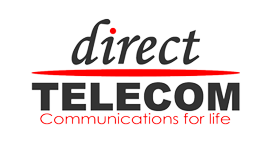Since the outbreak of the COVID-19 Pandemic, there is a worldwide common consensus that in order to beat it, we must #StayAtHome!
From home we now Telework, use online platforms for educating our children and of course entertain ourselves using a wide variety of Social Media, Streaming & Gaming platforms. The sudden surge of online activity has put the global communications infrastructure to the test, and it was not long before many customers and users from around the world started noticing that their Internet connections “seemed to not be performing” as well as usual. Of course this does not come as a surprise considering that there are now millions more of users using the services “simultaneously” than before, so getting those streams in 4K or HD quality is much harder to achieve.
Top European officials & EU Commissioners have had conversations with popular platforms such as Netflix, YouTube, HBO, Amazon Prime etc. and are urging them to reduce the standard definitions from HD to SD if possible to make more room for all the extra users.
To get an idea of the difference, consider that with popular platforms if you are Streaming in HD for 1 hour, you are “downloading” about 3GB (3000 MB) of data. If you Stream in SD instead, this would be reduced to about 1GB (1000 MB).
It is clearly important to make a joint effort in order to make the experience for all users as good as it can be all things considered, so what is Direct Telecom doing about it?
1. First of all, our transcoding platforms deliver more efficient Bitrates! Â For 1 Hour of Streaming dT Media TV, our SD streams use only 675MB and are Adaptive to be able to go as low as 225MB.
Our HD Streams perform at just 1.12GB (1125 MB) and are Adaptive to be able to go as low as 360MB.
2. Our most popular Live Streams are ABR (Adaptive Bitrate) – This is an extremely smart method for streaming video which will automatically adjust the Bitrate in order to deliver the highest possible quality based on the customer’s current Internet connection performance and network conditions.
3. We have special Proxy Servers deployed within the networks that our customers are connected to.
What does this mean? Â Well, imagine that you are Streaming BBC World News and the Stream typically comes from a server in the UK, then it needs to travel for thousands of kilometres and suffer numerous possible points of bandwidth congestion before it reaches Spain, and then your screen. The Proxy Server basically sits “inside” the network that you are locally connected to so that instead of fetching this stream from the UK, it is fetching it from a server that is much closer to you. The results speak for themselves as in most cases it is possible to continue enjoying the Streams in HD quality as they are not being “fetched” from a server that is thousands of Km’s away and currently suffering from Bandwidth congestion.
We consider ourselves very fortunate to be in this position. We are happy to have gone through the brainstorming processes that made us make these decisions that have led us to implement this type of network architecture so that hopefully this might result in a more consistent and enjoyable TV & Internet experience for our customers!
Best regards from the whole team at Direct Telecom!




